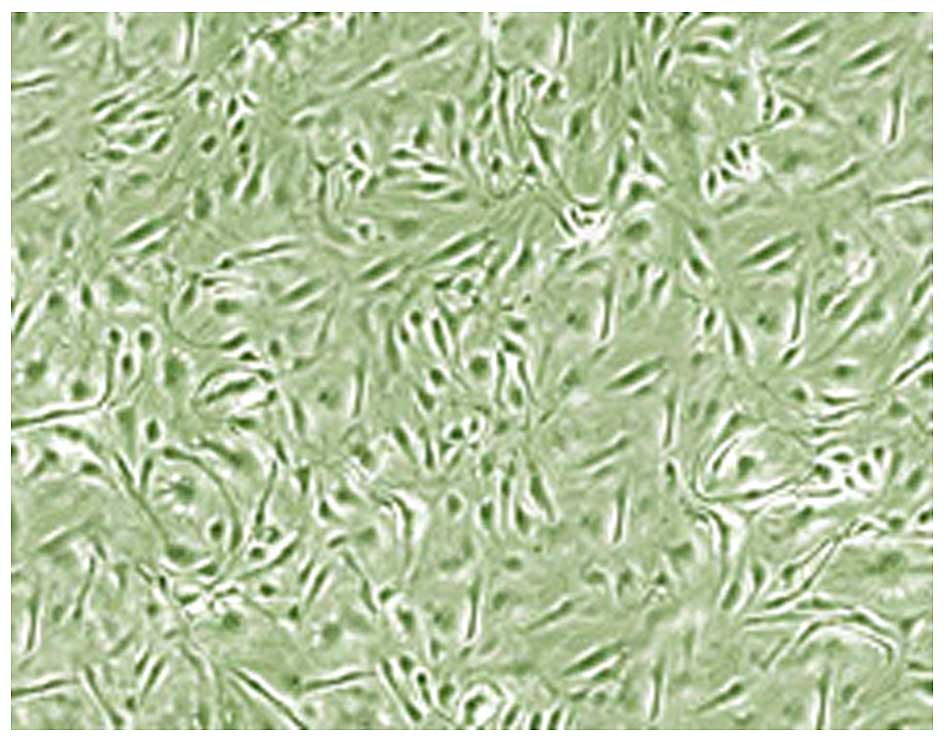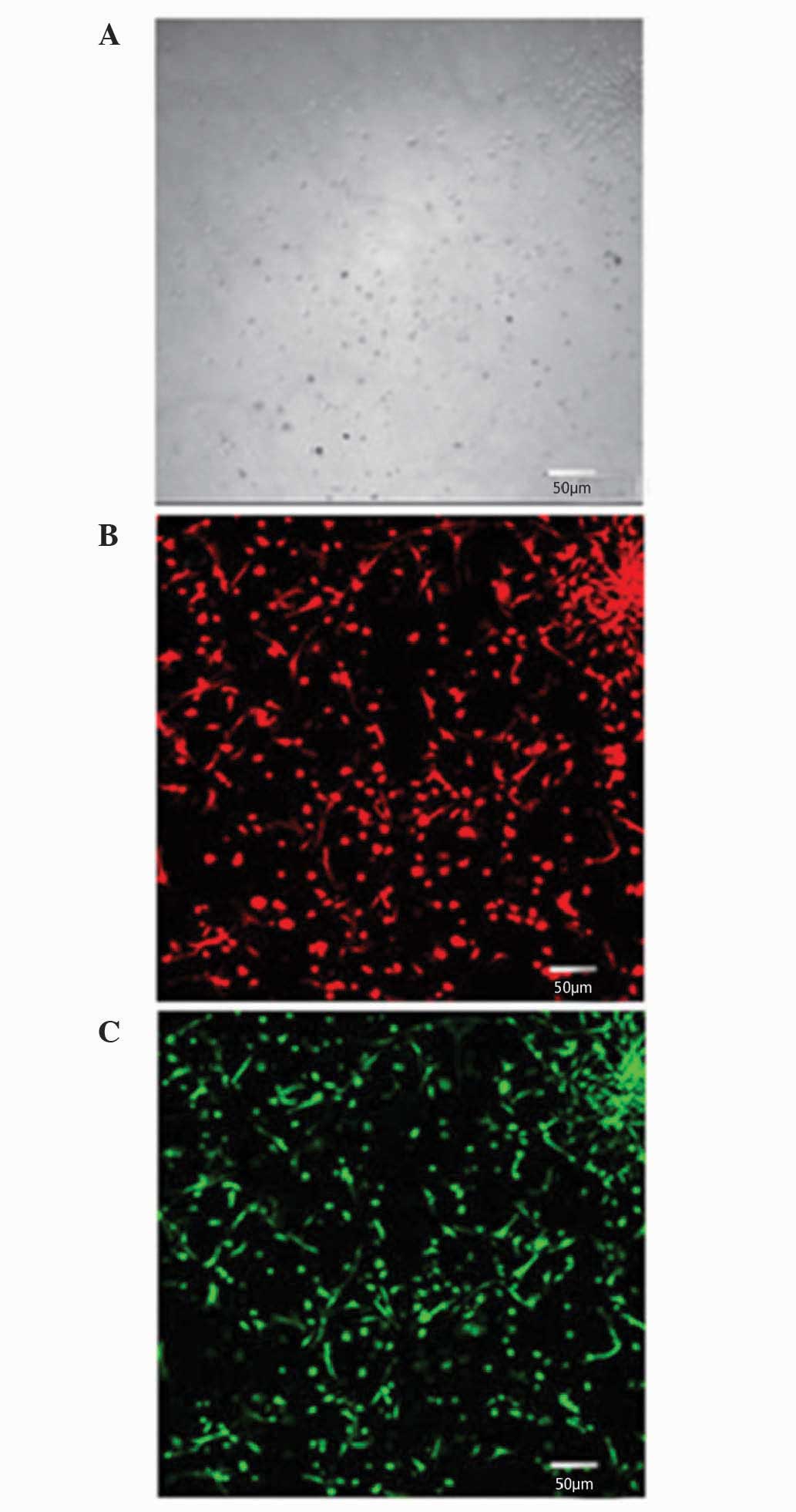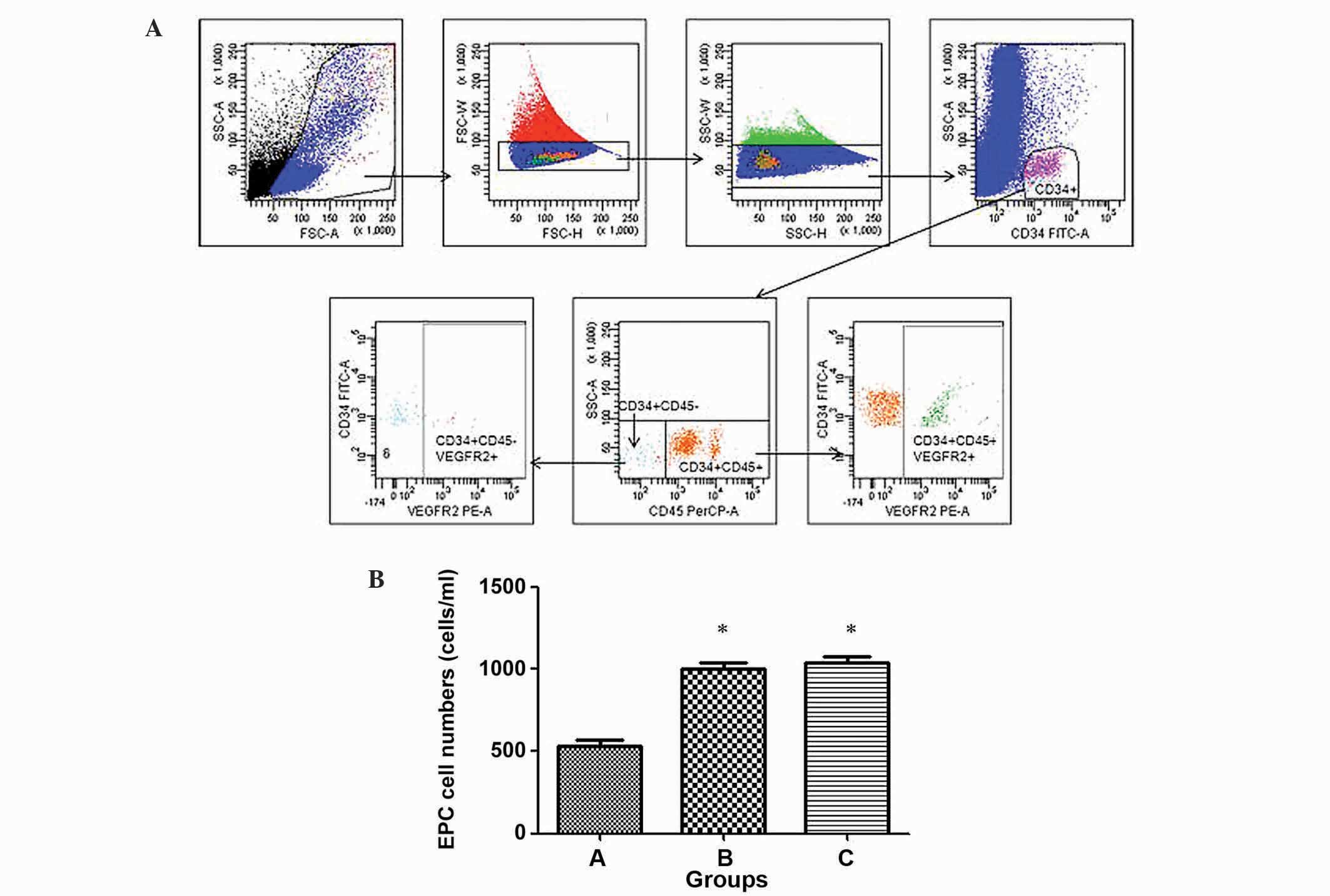|
1
|
Tacheci I and Bures J: Peptic ulcer
disease in patients with diabetes mellitus. Vnitr Lek. 57:347–350.
2011.(In Czech). PubMed/NCBI
|
|
2
|
Najm WI: Peptic ulcer disease. Prim Care.
38:383–394. 2011. View Article : Google Scholar : PubMed/NCBI
|
|
3
|
GBD 2013 Mortality and Causes of Death
Collaborators: Global, regional, and national age-sex specific
all-cause and cause-specific mortality for 240 causes of death,
1990–2013: A systematic analysis for the Global Burden of Disease
Study 2013. Lancet. 385:117–171. 2015. View Article : Google Scholar : PubMed/NCBI
|
|
4
|
Dey L, Attele AS and Yuan CS: Alternative
therapies for type 2 diabetes. Altern Med Rev. 7:45–58.
2002.PubMed/NCBI
|
|
5
|
Lorenzi M: Glucose toxicity in the
vascular complications of diabetes: The cellular perspective.
Diabetes Metab Rev. 8:85–103. 1992. View Article : Google Scholar : PubMed/NCBI
|
|
6
|
Urbich C and Dimmeler S: Endothelial
progenitor cells: Characterization and role in vascular biology.
Circ Res. 95:343–353. 2004. View Article : Google Scholar : PubMed/NCBI
|
|
7
|
Werner N, Kosiol S, Schiegl T, Ahlers P,
Walenta K, Link A, Böhm M and Nickenig G: Circulating endothelial
progenitor cells and cardiovascular outcomes. N Engl J Med.
353:999–1007. 2005. View Article : Google Scholar : PubMed/NCBI
|
|
8
|
Fadini GP, Miorin M, Facco M, Bonamico S,
Baesso I, Grego F, Menegolo M, de Kreutzenberg SV, Tiengo A,
Agostini C and Avogaro A: Circulating endothelial progenitor cells
are reduced in peripheral vascular complications of type 2 diabetes
mellitus. J Am Coll Cardiol. 45:1449–1457. 2005. View Article : Google Scholar : PubMed/NCBI
|
|
9
|
Tecilazich F, Dinh T, Pradhan-Nabzdyk L,
Leal E, Tellechea A, Kafanas A, Gnardellis C, Magargee ML, Dejam A,
Toxavidis V, et al: Role of endothelial progenitor cells and
inflammatory cytokines in healing of diabetic foot ulcers. PLoS
One. 8:e833142013. View Article : Google Scholar : PubMed/NCBI
|
|
10
|
Alberti KG and Zimmet PZ: Definition,
diagnosis and classification of diabetes mellitus and its
complications Part 1: diagnosis and classification of diabetes
mellitus provisional report of a WHO consultation. Diabet Med.
15:539–553. 1998. View Article : Google Scholar : PubMed/NCBI
|
|
11
|
Editorial Board of Chinese Journal of
Digestion: Suggestion on standardized diagnosis and treatment of
peptic ulcer disease (2008, Huang Shah). Zhong Hua Xiao Hua Za Zhi.
28:447–450. 2008.(In Chinese).
|
|
12
|
Asahara T, Murohara T, Sullivan A, Silver
M, van der Zee R, Li T, Witzenbichler B, Schatteman G and Isner JM:
Isolation of putative progenitor endothelial cells for
angiogenesis. Science. 275:964–967. 1997. View Article : Google Scholar : PubMed/NCBI
|
|
13
|
Hirschi KK, Ingram DA and Yoder MC:
Assessing identity, phenotype and fate of endothelial progenitor
cells. Arterioscler Thromb Vasc Biol. 28:1584–1595. 2008.
View Article : Google Scholar : PubMed/NCBI
|
|
14
|
Bertolini F, Mancuso P, Braidotti P,
Shaked Y and Kerbel RS: The multiple personality disorder
phenotype(s) of circulating endothelial cells in cancer. Biochim
Biophys Acta. 1796:27–32. 2009.PubMed/NCBI
|
|
15
|
Tarnawski AS: Cellular and molecular
mechanisms of gastrointestinal ulcer healing. Dig Dis Sci. 50(Suppl
1): S24–S33. 2005. View Article : Google Scholar : PubMed/NCBI
|
|
16
|
Schmidt-Lucke C, Rössig L, Fichtlscherer
S, Vasa M, Britten M, Kämper U, Dimmeler S and Zeiher AM: Reduced
number of circulating endothelial progenitor cells predicts future
cardiovascular events: Proof of concept for the clinical importance
of endogenous vascular repair. Circulation. 111:2981–2987. 2005.
View Article : Google Scholar : PubMed/NCBI
|
|
17
|
Hristov M, Erl W and Weber PC: Endothelial
progenitor cells: Mobilization, differentiation and homing.
Arterioscler Thromb Vasc Biol. 23:1185–1189. 2003. View Article : Google Scholar : PubMed/NCBI
|
|
18
|
Brunner S, Hoellerl F, Schmid-Kubista KE,
Zeiler F, Schernthaner G, Binder S and Schernthaner GH: Circulating
angiopoietic cells and diabetic retinopathy in type 2 diabetes
mellitus, with or without macrovascular disease. Invest Ophthalmol
Vis Sci. 52:4655–4662. 2011. View Article : Google Scholar : PubMed/NCBI
|
|
19
|
Li M, Ho JC, Lai KW, Au KK, Xu A, Cheung
BM, Lam KS and Tse HF: The decrement in circulating endothelial
progenitor cells (EPCs) in type 2 diabetes is independent of the
severity of the hypoadiponectemia. Diabetes Metab Res Rev.
27:185–194. 2011. View Article : Google Scholar : PubMed/NCBI
|
|
20
|
Leeper NJ, Hunter AL and Cooke JP: Stem
cell therapy for vascular regeneration: Adult, embryonic, and
induced pluripotent stem cells. Circulation. 122:517–526. 2010.
View Article : Google Scholar : PubMed/NCBI
|
|
21
|
Tang YL, Zhao Q, Qin X, Shen L, Cheng L,
Ge J and Phillips MI: Paracrine action enhances the effects of
autologous mesenchymal stem cell transplantation on vascular
regeneration in rat model of myocardial infarction. Ann Thorac
Surg. 80:229–237. 2005. View Article : Google Scholar : PubMed/NCBI
|
|
22
|
Rafii S and Lyden D: Therapeutic stem and
progenitor cell transplantation for organ vascularization and
regeneration. Nat Med. 9:702–712. 2003. View Article : Google Scholar : PubMed/NCBI
|
|
23
|
Asahara T, Murohara T, Sullivan A, Silver
M, van der Zee R, Li T, Witzenbichler B, Schatteman G and Isner JM:
Isolation of putative progenitor endothelial cells for
angiogenesis. Science. 275:964–967. 1997. View Article : Google Scholar : PubMed/NCBI
|
|
24
|
Sen S, McDonald SP, Coates PT and Bonder
CS: Endothelial progenitor cells: Novel biomarker and promising
cell therapy for cardiovascular disease. Clin Sci (Lond).
120:263–283. 2011. View Article : Google Scholar : PubMed/NCBI
|
|
25
|
Zhao YH, Yuan B, Chen J, Feng DH, Zhao B,
Qin C and Chen YF: Endothelial progenitor cells: Therapeutic
perspective for ischemic stroke. CNS Neurosci Ther. 19:67–75. 2013.
View Article : Google Scholar : PubMed/NCBI
|














